#roman emperor hadrian
Video
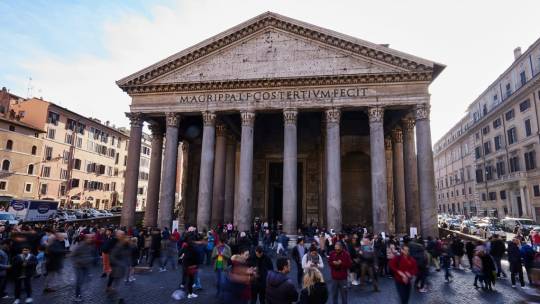
The Pantheon: The Ancient Building Still Being Used After 2,000-Years
When visitors walk into the Pantheon in Rome and encounter its colossal dome, they may experience the same theatricality as its guests nearly 2,000 years ago.
"Anyone who steps inside the Pantheon immediately feels the crushing weight of human history, but also the incredible lightness of human creativity," said John Ochsendorf, professor of architecture at MIT and former director of the American Academy in Rome.

"You come into this grand space and you look up and you see the sky or a passing cloud. And you think: 'How could they have done this nearly two millennia ago?'"
The Pantheon is the oldest building in the world that's still in use today. Since the 7th century, it has been a Roman Catholic church.
Built around 125 A.D. by the Roman emperor Publius Aelius Hadrianus, it was actually the third iteration of the structure. The first Pantheon caught fire around 80 A.D. and was rebuilt shortly after, but it was struck by lightning and burned down again around 110 A.D. The buildings' ill fate led to rumors that the Pantheon was cursed.
The facade of the completed structure riffed on ancient Greek motifs, with a portico entrance featuring a pediment -- a triangular top -- and two rows of Corinthian columns. The interior was sweeping and airy, capped by a dome that to this day -- is still the largest unsupported concrete dome in the world.
What was it used for?
Pantheon means "all gods," and though it's commonly thought the structure was a site of worship dedicated to Roman deities, its original purpose is actually unknown.
With scant mentions of it in Ancient texts, historians have been left somewhat in the dark. Though it could be a temple, Roman buildings were typically multi-purpose structures, said Lynne Lancaster, an architectural historian and humanities educator. "And so what actually went on in the Pantheon is hard to say."

Legends say it's the very site where Rome's founder, Romulus, ascended to heaven. Others believe the Pantheon was where the Roman emperor could communicate with the gods. Whatever the case, like many Roman architectural feats, the imposing structure was a show of might, an "important symbol of imperial power," said Luca Mercuri, the Pantheon's current director.
Indeed, Roman architecture of the time embodied wealth, strength and dignity. Centuries later, Neoclassical architects would reference the Pantheon's portico and dome combination to imbue their buildings with those same values, from the US Capitol in Washington, DC., to the Somerset House in London.
How was it built?
The Pantheon was an architectural marvel of the Roman Empire.
The oculus -- Latin for "eye" -- stretches 30 feet across, opening the structure to the heavens. The sun beams through the oculus, and when it storms, the rain comes down like a waterfall into the interior.

Legends say it's the very site where Rome's founder, Romulus, ascended to heaven. Others believe the Pantheon was where the Roman emperor could communicate with the gods. Whatever the case, like many Roman architectural feats, the imposing structure was a show of might, an "important symbol of imperial power," said Luca Mercuri, the Pantheon's current director.
Indeed, Roman architecture of the time embodied wealth, strength and dignity. Centuries later, Neoclassical architects would reference the Pantheon's portico and dome combination to imbue their buildings with those same values, from the US Capitol in Washington, DC., to the Somerset House in London.
How was it built?
The Pantheon was an architectural marvel of the Roman Empire.
The oculus -- Latin for "eye" -- stretches 30 feet across, opening the structure to the heavens. The sun beams through the oculus, and when it storms, the rain comes down like a waterfall into the interior.
"The oculus at the center seemed to tempt fate and leave (the Pantheon) open to the sky," said Ochsendorf. "But it also showed a mastery of geometry and construction -- that they could build domes on that scale and leave an oculus open at the center, in a way (that was) almost showing off."

One trick to make a large dome stable was to use progressively lighter stone in the concrete mix as it reached the top. Heavy brick could be used at the base, with spongy, light volcanic rock around the oculus.
Though the Pantheon has revealed some of its design secrets, Lancaster said she still finds magic in the details. As the day progresses, the sun flickers around the dome's interior, casting light over its sunken grid like a giant sundial.
"It's one of the few places in the world (where) you can actually watch the Earth turn."
By Jacqui Palumbo.
#The Pantheon#The Pantheon: The Ancient Building Still Being Used After 2000-Years#roman catholic church#roman emperor hadrian#architecture#building#ancient building#ancient artifacts#archeology#archeolgst#history#history news#ancient history#ancient culture#ancient civilizations#ancient rome#roman history#roman empire#roman architecture#roman archaeology#roman building#the might of rome#long reads
123 notes
·
View notes
Text


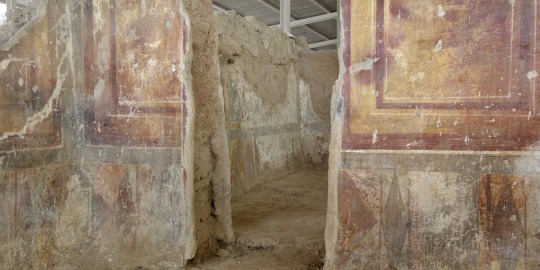


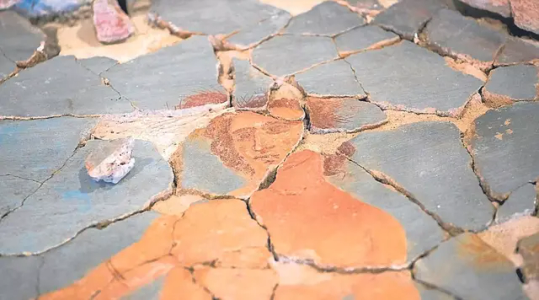
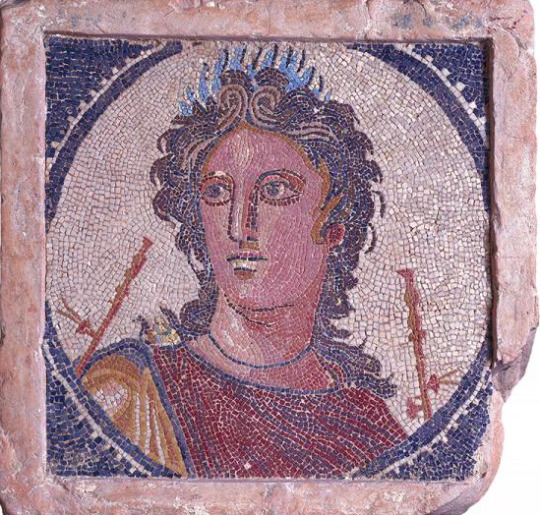



Vil·la romana dels Munts (Els Munts Roman Villa) is one of the best preserved Roman villas in the Iberian peninsula, the Roman province of Hispania. It's located in modern-day Altafulla (Camp de Tarragona, Catalonia), in the countryside near the important Roman city of Tarraco (modern-day Tarragona). The villa's archaeological remains are included in the UNESCO World Heritage Site "Archaeological Ensemble of Tarraco".
The oldest part of the villa dates from the 1st century AD, when it was a small farming villa, but it was soon abandoned. In the early 2nd century AD, the old villa was demolished and the place was rebuilt as a large, aristocratic villa: it still kept having a significant agricultural role, but included a magnificent and luxurious residence area. To get an idea of how luxurious it was, a normal 2nd-century Roman villa might have one marble covering, while Els Munts has hundreds of coverings made of marble imported from the Eastern Mediterranean and the North of Africa. The residence also had wall paintings, mosaic floors, statues, fountains, and artificial ponds. The villa also included a bath house and a the largest temple of the Mithraic religion known in the Western Roman Empire.
When the Roman emperor Hadrian stayed in Tarraco the winter of 122-123 AD, it's thought that this villa could have been the place where he was staying. A statue of Antinous (Hadrian's lover) was found in Els Munts.

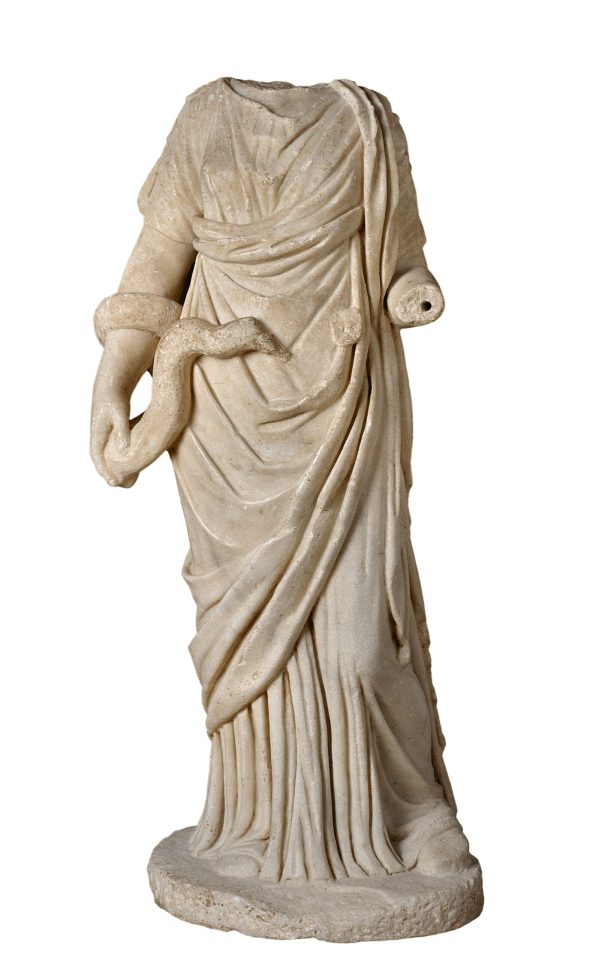

Statue of Antinous, Higea, and Asclepios found in Els Munts. Nowadays in Museu Nacional Arqueològic de Tarragona.
The villa was partially destroyed by a fire in the late 3rd century, starting its decline. In the early 5th century, it was remodelled into a Late Roman villa and then a Visigothic one, and was in use until the 7th century.
Photos by Quim Roser/Dep. Cultura, ArqueoXarxa, Manel Antolí/Tarragona Turisme, Tjerk van der Meulen/Ara, MNAT - Google Arts and Culture. Drawing reconstruction by Hugo Prades/MNAT. Information from Museu Nacional Arqueològic de Tarragona and Ara (Josep Anton Remolà).
#vil·la romana dels munts#arqueologia#història#altafulla#catalunya#arts#archaeology#archeology#ancient rome#ancient roman#antinous#emperor hadrian#ancient#antiquity#roman empire#mosaic#catalonia#europe#travel#travel photography
86 notes
·
View notes
Text


thought i was about to permanently lose myself to one man
#tom holland#queer#books#ancient rome#peter parker#spiderman#memoirs of hadrian#marguerite yourcenar#roman empire#emperor hadrian#ancient history#reading recommendations#book recommendations#namesakes
34 notes
·
View notes
Text
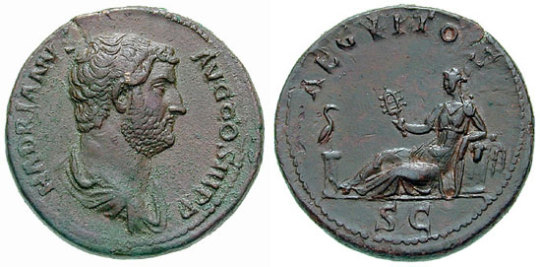
Bronze as minted by the Roman emperor Hadrian (r. 117-138 CE) between 134 and 138, to mark his visit in 130 to the province of Egypt. On the obverse, the bust of Hadrian, showing the Greek-style beard for which he was known; he is identified here as P(ATER) P(ATRIAE). On the reverse, an allegory of Egypt. The personified province reclines, her right hand holding a sistrum, the rattle often borne by the goddess Isis. Her left elbow rests on a basket of grain, representing the vital role of Egypt in supplying grain to Rome. At her feet, an ibis, symbol of the god Thoth, sits atop a column. Photo credit: Classical Numismatic Group, Inc. http://www.cngcoins.com
#classics#tagamemnon#ancient history#Ancient Rome#Roman Empire#Roman history#Hadrian#Emperor Hadrian#art#art history#ancient art#Roman art#Ancient Roman art#Roman Imperial art#coins#ancient coins#Roman coins#Ancient Roman coins#numismatics#ancient numismatics
59 notes
·
View notes
Text


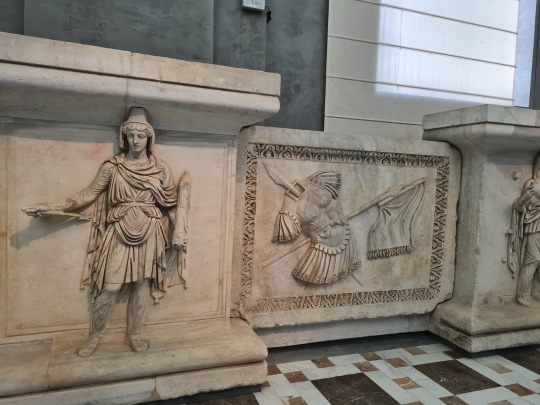
Reliefs from the Hadrianeum in Museo Archeologico Nazionale di Napoli
The persons represent provinces of the Roman Empire under the deified emperor Hadrian. The left figure is Scythia or Noricum, the middle figure is Armenia or Parthia and the right figure is Phrygia or Bithynia.
#naples#napoli#archeology#art#art history#art museum#museum#museum photography#national archeological museum#italy#italia#relief#emperor hadrian#history#ancient art#ancient rome#ancient history#archaeology#antiquity#roman empire#roman emperors#naples italy#campania#travel#travel photography#art photography#culture#photographers on tumblr
25 notes
·
View notes
Photo

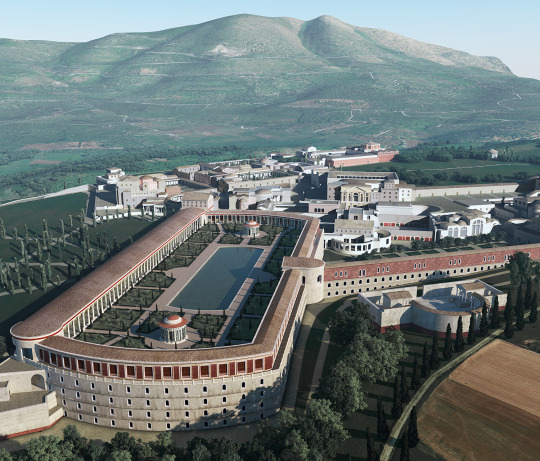
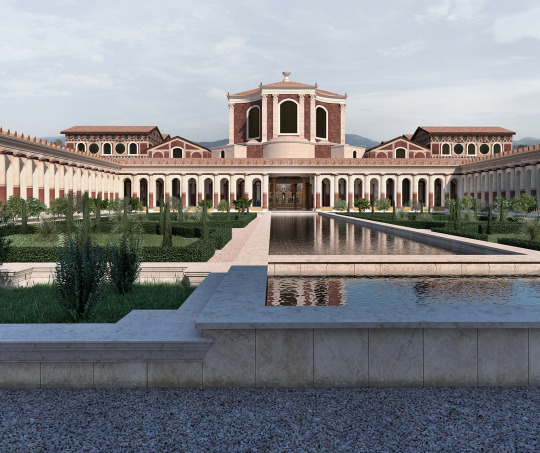
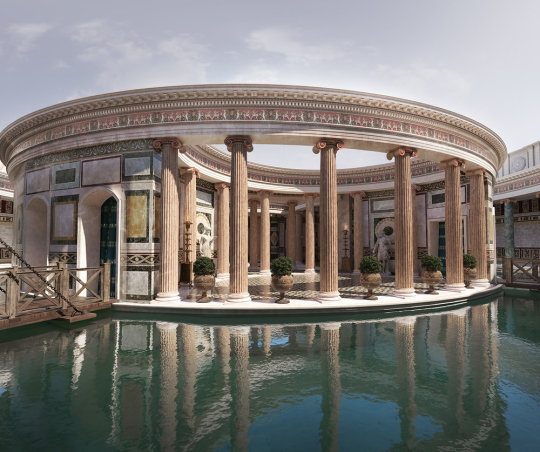




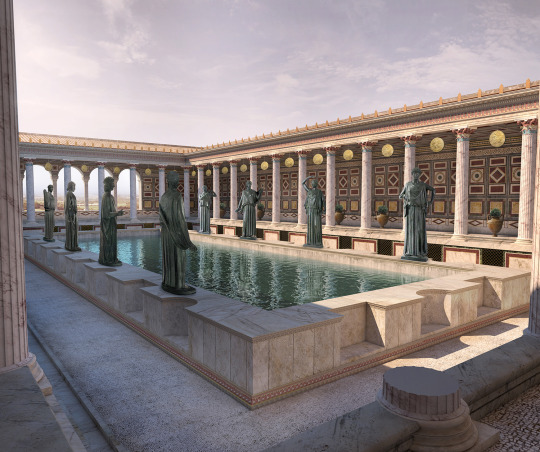

Villa Adriana, Tivoli, Italy,
The large villa complex built c. AD 120 by Roman Emperor Hadrian,
3D reconstruction. C: Progetto Katatexilux
#art#design#architecture#interiors#3dartist#hadrian#tivoli#italy#imperial#emperor hadrian#reconstruction#cgiart#luxuryhouses#luxutyhomes#luxurylifestyle#style#history#roman
880 notes
·
View notes
Text

Oldest Bronze Doors (115 AD) still in use in Pantheon, Rome, Italy.
These doors cast in bronze for Emperor Hadrian (76-138 AD) rebuilding, dated about 115 AD.
These large bronze doors serve as an entrance to the cella, measuring 4.45m wide by 7.53m high, yet so well balanced they can be pushed or pulled open easily by one person.
Each half of the double door weighs 8.5 tonnes. It rotates on pins set into floor and architrave above.
—
The bronze doors in the Pantheon of Rome are indeed a remarkable testament to the engineering and craftsmanship of the Roman Empire during the reign of Emperor Hadrian.
Here are some fascinating details about these historic doors:
1. Age and Origin:
The bronze doors in the Pantheon are estimated to date back to around 115 AD, making them over 1,900 years old.
They were commissioned and cast during the reign of Emperor Hadrian, who is renowned for his architectural contributions to Rome.
2. Purpose:
These doors serve as the entrance to the cella, the inner sanctuary or main chamber of the Pantheon.
The Pantheon itself is a well-preserved ancient Roman temple dedicated to all the gods (hence the name "Pantheon").
3. Size and Dimensions:
The bronze doors are sizable, measuring approximately 4.45 meters (14.6 feet) in width and 7.53 meters (24.7 feet) in height.
What is particularly impressive is that despite their substantial size, they are perfectly balanced and can be effortlessly opened or closed by a single person.
4. Weight:
Each half of the double door weighs a staggering 8.5 tonnes, adding up to a total weight of 17 tonnes for the entire set.
This speaks to the advanced metallurgy and engineering skills of the Romans in handling and crafting large bronze structures.
5. Rotating Mechanism:
The doors are mounted on pins that are set into the floor and the architrave (the lintel or horizontal beam) above the entrance.
This ingenious design allows for the doors to pivot smoothly, enabling them to be moved with relative ease despite their immense weight.
6. Historical Significance:
The Pantheon, with its iconic dome and these bronze doors, is an enduring symbol of Roman architectural innovation and grandeur.
The fact that these doors are still in use after nearly two millennia is a testament to the durability and quality of their construction.
The Pantheon's bronze doors are not only a functional part of this historic structure but also a tangible link to the past, offering a glimpse into the architectural and engineering achievements of ancient Rome.
They continue to awe and inspire visitors from around the world with their sheer size and remarkable craftsmanship.
Credit: Statistics (X)
#The Pantheon#bronze doors#Emperor Hadrian#Roman Empire#ancient Roman temple#temple#Roman architectural innovation#Roman engineering skills#Ancient Rome#doors#ancient civilizations#Rome#Italy
56 notes
·
View notes
Text
I'm not fond of Hadrian, at all, but even I was struck by this - that his contemporaries didn't criticize him for a relationship with his slave boy, but for grieving too much when the boy died.

It's hard for me to wrap my head around how fucking (or raping) a slave could be socially acceptable, but actually caring about him wasn't.
(Craig Williams, Roman Homosexuality, chapter 1)
#i wonder if roman mores contributed to the suppression of grief among men in western cultures today#i've known a lot of guys who turned to substance abuse or self-harm because they couldn't openly express their sadness/fear/grief#without being seen as 'wimps' or 'sissies' for it. violence was acceptable but showing emotional attachment wasn't#whereas the happiest guys i know are those who can talk about their sadness and have friends who accept it#emperor hadrian#antinous#roman homosexuality#craig williams#jlrrt reads#rape mention
31 notes
·
View notes
Text
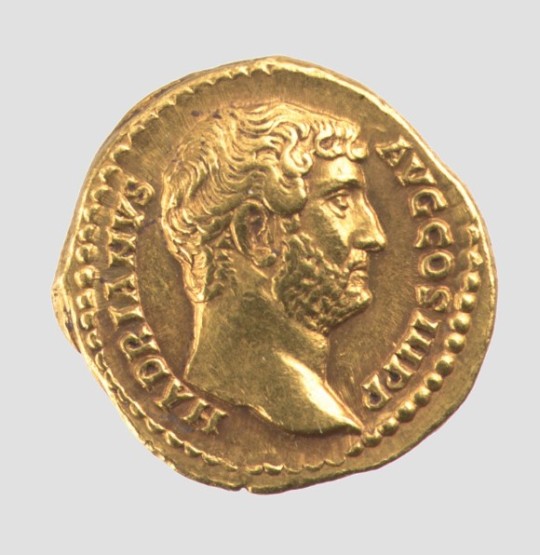
Gold aureus of Hadrian. Roman 134–138 CE. x
140 notes
·
View notes
Text

Excavation of Thasos. 1963
#emperor hadrian#Hadrian#antinous modern religion#religio antinoi#antinous#ancient rome#roman emperor
103 notes
·
View notes
Text
Hadrian was a powerful prominent Roman Emperor, who reigned in the 2nd century AD. He undertook many building projects, including the rebuilding of the Pantheon and construction of the Temple of Venus and Roma, but he is most famous for building Hadrian’s Wall, a 117.5 km (73.0 mile) long defensive fortification which marked the northern limit of Roman Britain. It’s real purpose is still a matter of debate.
#hadrian#emperor#Roman Empire#england#Roman Colonization & Expansion#ancient#history#ancient origins
22 notes
·
View notes
Text

This is the same drawing i've been mining for content for six months but I just love having fun with my photos😊everything in the poster is mine except for the bust image which is from old book scans on wikimedia. Even though I was also kind of hoping to have something more exciting since today is my birthday, I'm almost done with an actually new drawing I'm really happy about, so I wanted to take more time to make sure it turns out the way I see it.❤️
39 notes
·
View notes
Photo

Portrait Head of Emperor Hadrian, Roman, 130-38 CE
#portrait head of emperor hadrian#hadrian#roman#ancient rome#ancient roman#130#130 ce#138#138 ce#130s#100s#2nd century#art#sculpture#statue#portrait
39 notes
·
View notes
Text

not hetalia art i just have been thinking about antinous a lot… he deserved a lot better 💔 anyways little drawing of him to soothe my brainrot
#my art#antinous#emperor hadrian#roman empire#ancient rome#art#fanart#artist#artists on tumblr#digital art#digital artist
16 notes
·
View notes
Text


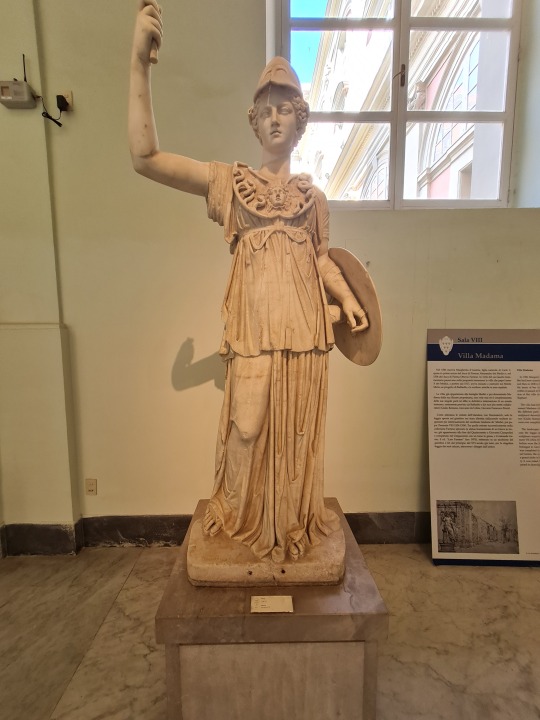
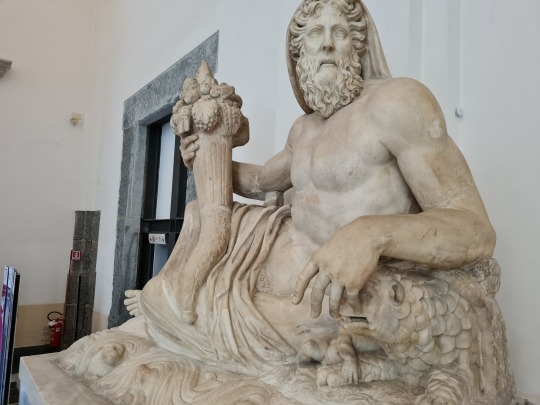
Roman statues of gods in Museo Archeologico Nazionale di Napoli
1: Marble statue of Aphrodite, Dresden-Capitoline style, a Roman copy made 140-160 AD after a Greek original 300-200 BC.
2. Marble statue of Antinous as Bacchus, 2nd century AD.
3. Roman copy of the Athena Parthenos.
4. Roman statue of a river deity (the Nile?), 2nd century AD.
#archaeology#napoli#naples#museum#statues#sculptures#art#history#art history#roman art#roman statue#culture#travel#travel photography#photography#museum photography#art photography#photographers on tumblr#art museum#greek gods#aphrodite#emperor hadrian#antinous#bacchus#athena deity#greek mythology
24 notes
·
View notes
Text

Silver denarius of the Roman emperor Hadrian (r. 117-138 CE), dating to 119-122. On the obverse, a bust of Hadrian; on the reverse, the seated goddess Roma, with Victoria (Victory) in her right hand and a spear in her left. Found in north Yorkshire; now in the British Museum. Photo credit: The Portable Antiquities Scheme/ The Trustees of the British Museum.
#classics#tagamemnon#Ancient Rome#Roman Empire#ancient history#Roman history#Hadrian#Emperor Hadrian#art#art history#ancient art#Roman art#Ancient Roman art#Roman Imperial art#coins#ancient coins#Roman coins#Ancient Roman coins#denarius#numismatics#ancient numismatics#British Museum
130 notes
·
View notes